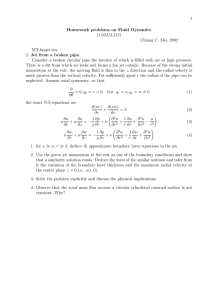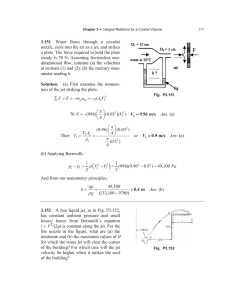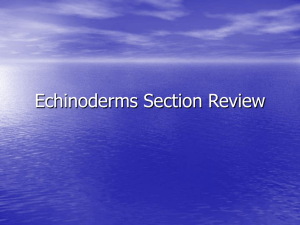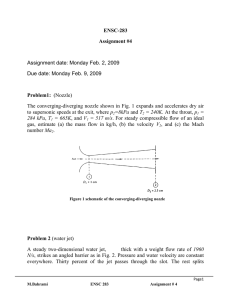DREDGE SUCTION NOZZLES
advertisement
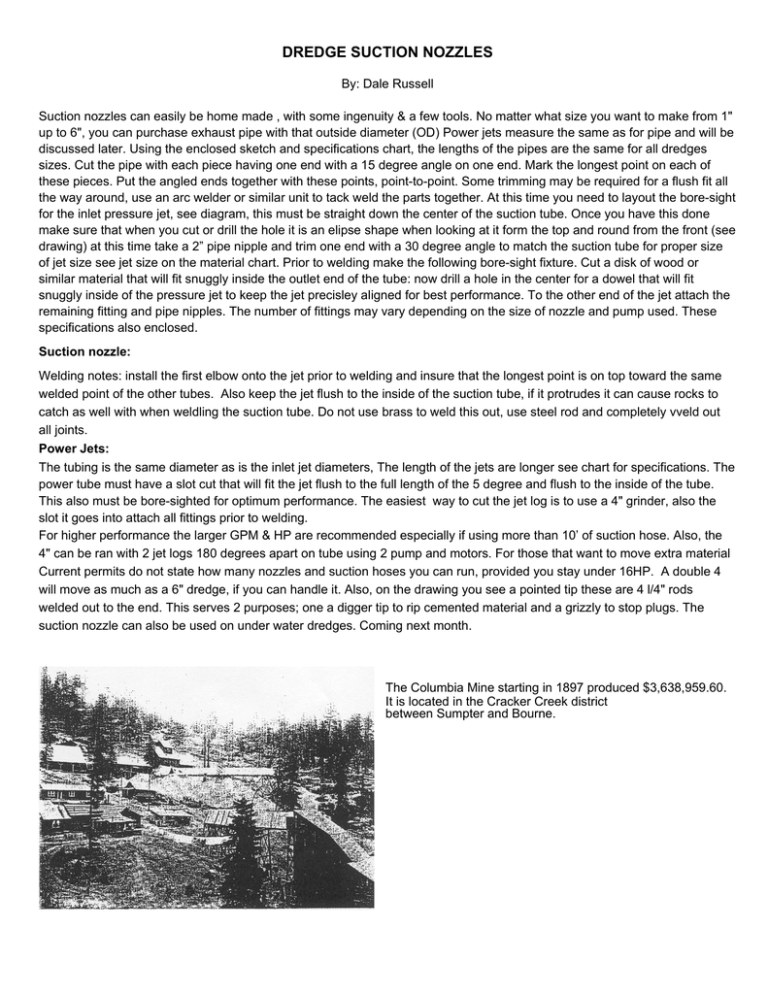
DREDGE SUCTION NOZZLES By: Dale Russell Suction nozzles can easily be home made , with some ingenuity & a few tools. No matter what size you want to make from 1" up to 6", you can purchase exhaust pipe with that outside diameter (OD) Power jets measure the same as for pipe and will be discussed later. Using the enclosed sketch and specifications chart, the lengths of the pipes are the same for all dredges sizes. Cut the pipe with each piece having one end with a 15 degree angle on one end. Mark the longest point on each of these pieces. Put the angled ends together with these points, point-to-point. Some trimming may be required for a flush fit all the way around, use an arc welder or similar unit to tack weld the parts together. At this time you need to layout the bore-sight for the inlet pressure jet, see diagram, this must be straight down the center of the suction tube. Once you have this done make sure that when you cut or drill the hole it is an elipse shape when looking at it form the top and round from the front (see drawing) at this time take a 2” pipe nipple and trim one end with a 30 degree angle to match the suction tube for proper size of jet size see jet size on the material chart. Prior to welding make the following bore-sight fixture. Cut a disk of wood or similar material that will fit snuggly inside the outlet end of the tube: now drill a hole in the center for a dowel that will fit snuggly inside of the pressure jet to keep the jet precisley aligned for best performance. To the other end of the jet attach the remaining fitting and pipe nipples. The number of fittings may vary depending on the size of nozzle and pump used. These specifications also enclosed. Suction nozzle: Welding notes: install the first elbow onto the jet prior to welding and insure that the longest point is on top toward the same welded point of the other tubes. Also keep the jet flush to the inside of the suction tube, if it protrudes it can cause rocks to catch as well with when weldling the suction tube. Do not use brass to weld this out, use steel rod and completely vveld out all joints. Power Jets: The tubing is the same diameter as is the inlet jet diameters, The length of the jets are longer see chart for specifications. The power tube must have a slot cut that will fit the jet flush to the full length of the 5 degree and flush to the inside of the tube. This also must be bore-sighted for optimum performance. The easiest way to cut the jet log is to use a 4" grinder, also the slot it goes into attach all fittings prior to welding. For higher performance the larger GPM & HP are recommended especially if using more than 10’ of suction hose. Also, the 4" can be ran with 2 jet logs 180 degrees apart on tube using 2 pump and motors. For those that want to move extra material Current permits do not state how many nozzles and suction hoses you can run, provided you stay under 16HP. A double 4 will move as much as a 6" dredge, if you can handle it. Also, on the drawing you see a pointed tip these are 4 l/4" rods welded out to the end. This serves 2 purposes; one a digger tip to rip cemented material and a grizzly to stop plugs. The suction nozzle can also be used on under water dredges. Coming next month. The Columbia Mine starting in 1897 produced $3,638,959.60. It is located in the Cracker Creek district between Sumpter and Bourne. Tube 1 ½” 2” 2 ½” 3” 4” Jet Size Water Pipe 3/8” 3/8” 3/8” ½” 5/8” Pump GPM 80 - 100 100 - 150 125 – 150 180 – 250 300 – 400 Sluice Size Conventional Or Flare 10 x 36” 10 x 36” 10 x 48” 12 x 48” 16 x 48” + Motor HP 2 2–3½ 3½-5 5 5-8 Power Jet Jet Length 6” 7” 8” 8” 10” Power Jet Tube Length 1 ½” 18” 2” 28” 2 ½” 28” 3” 36” 4” 40”
